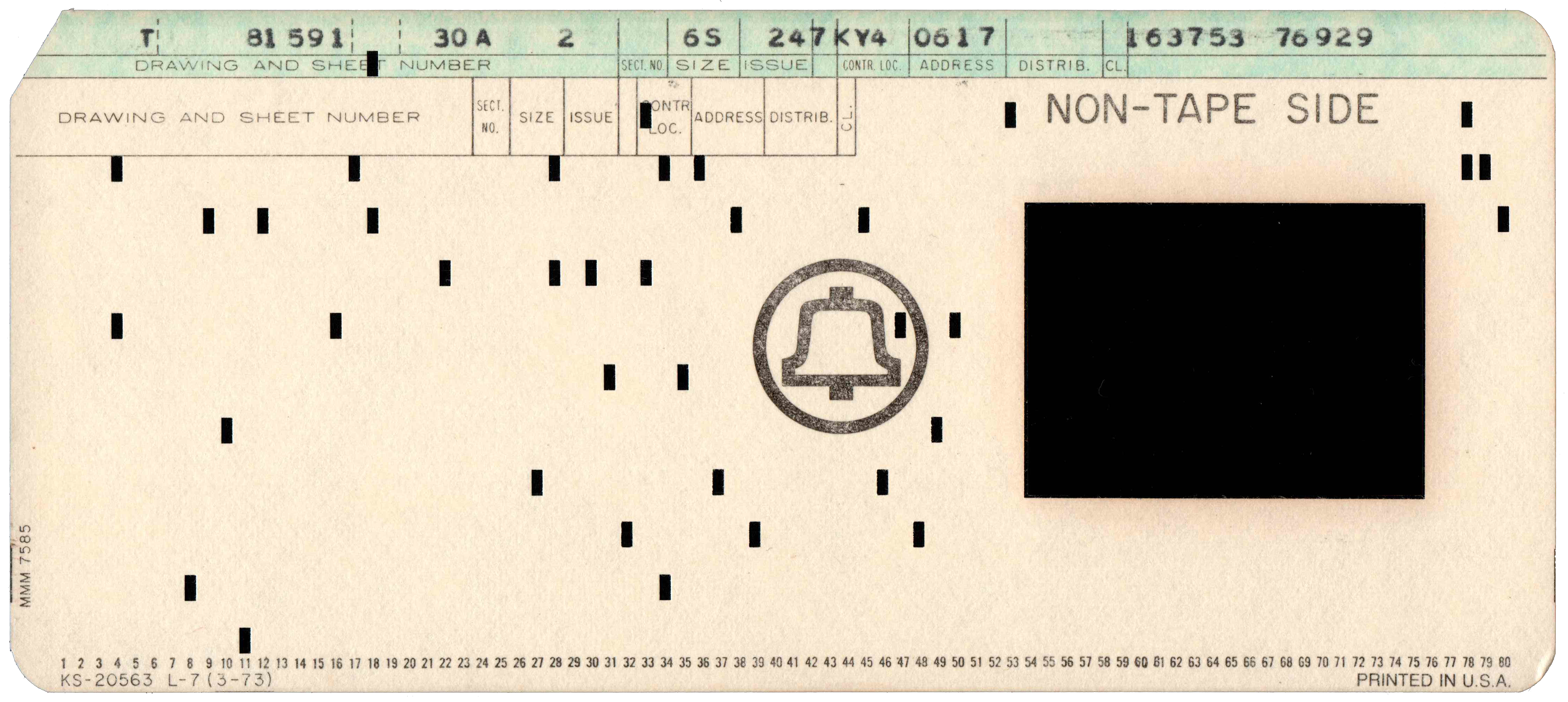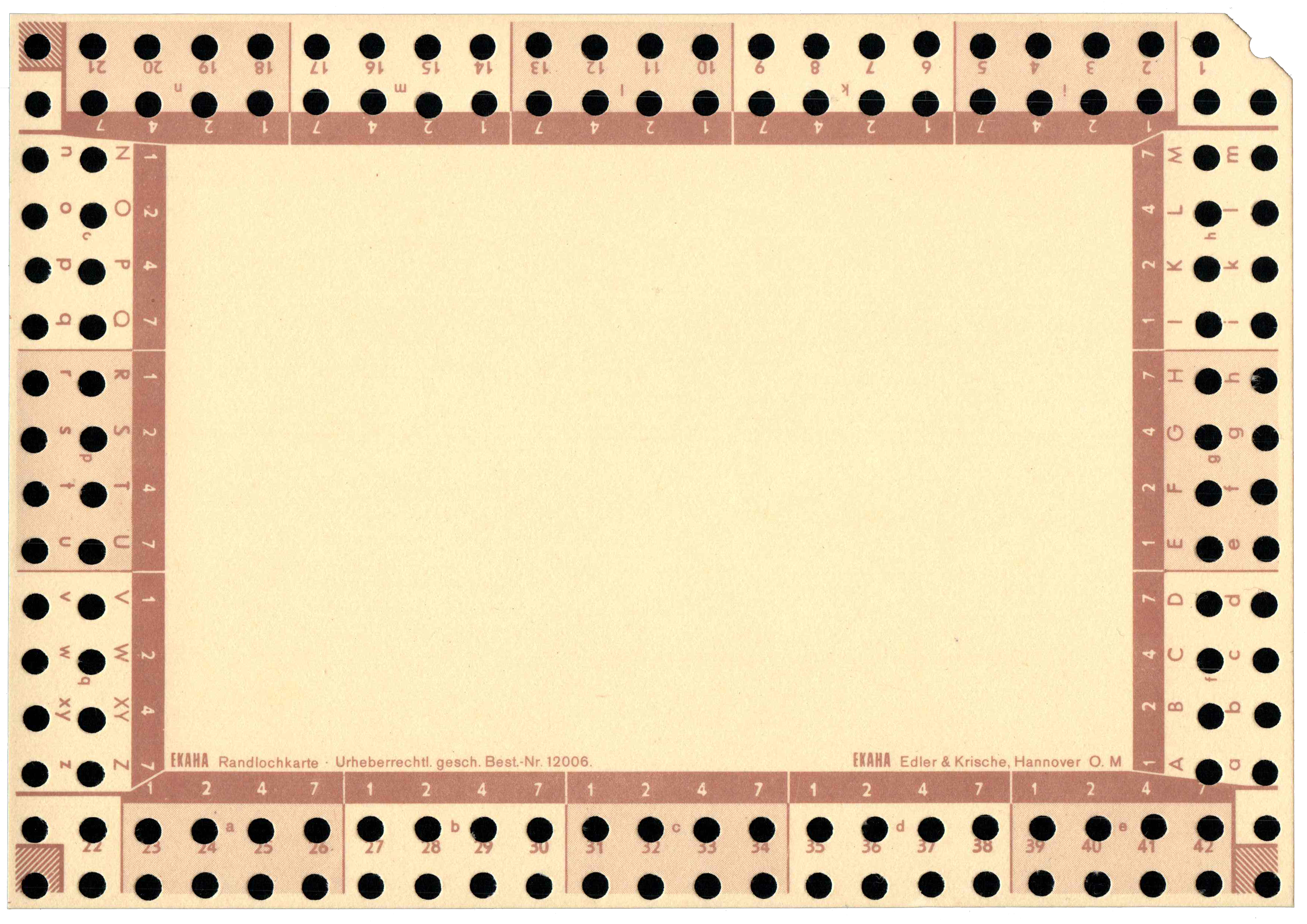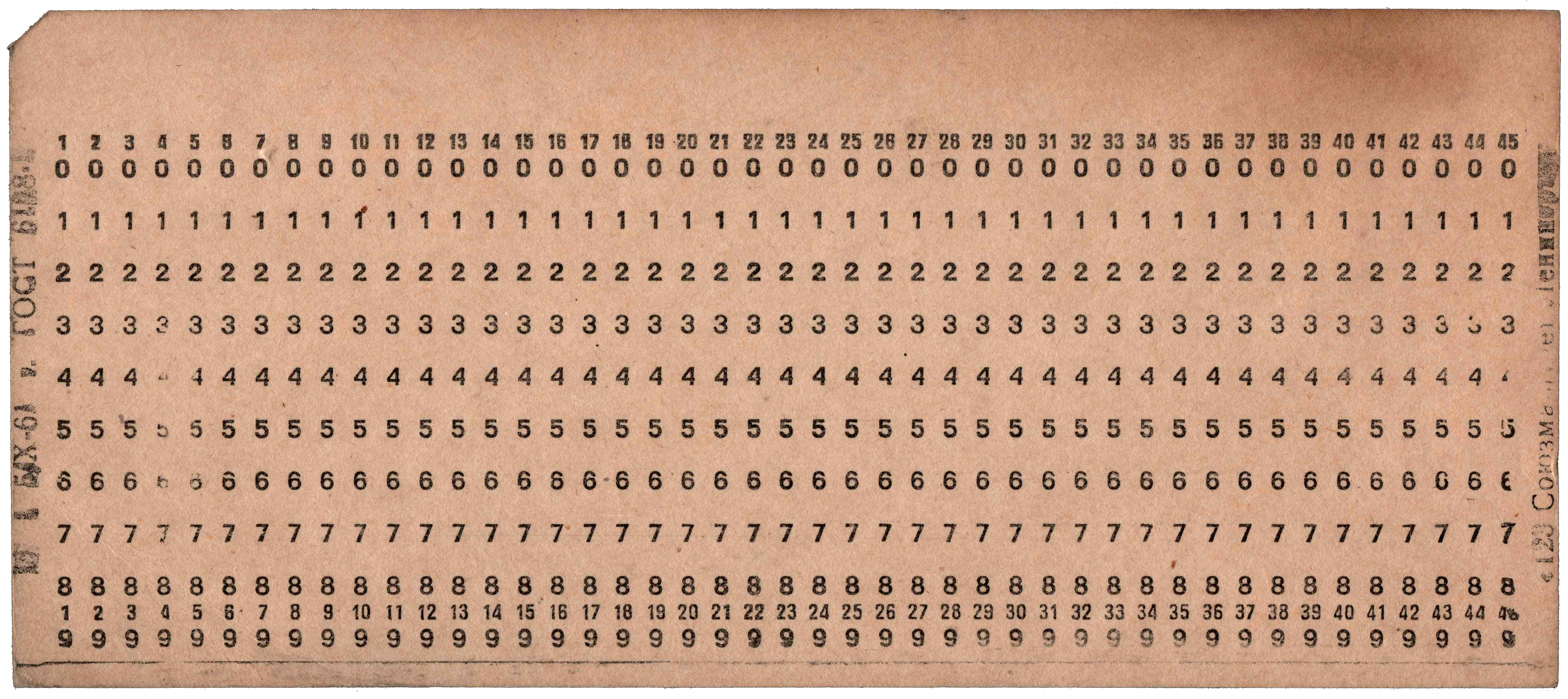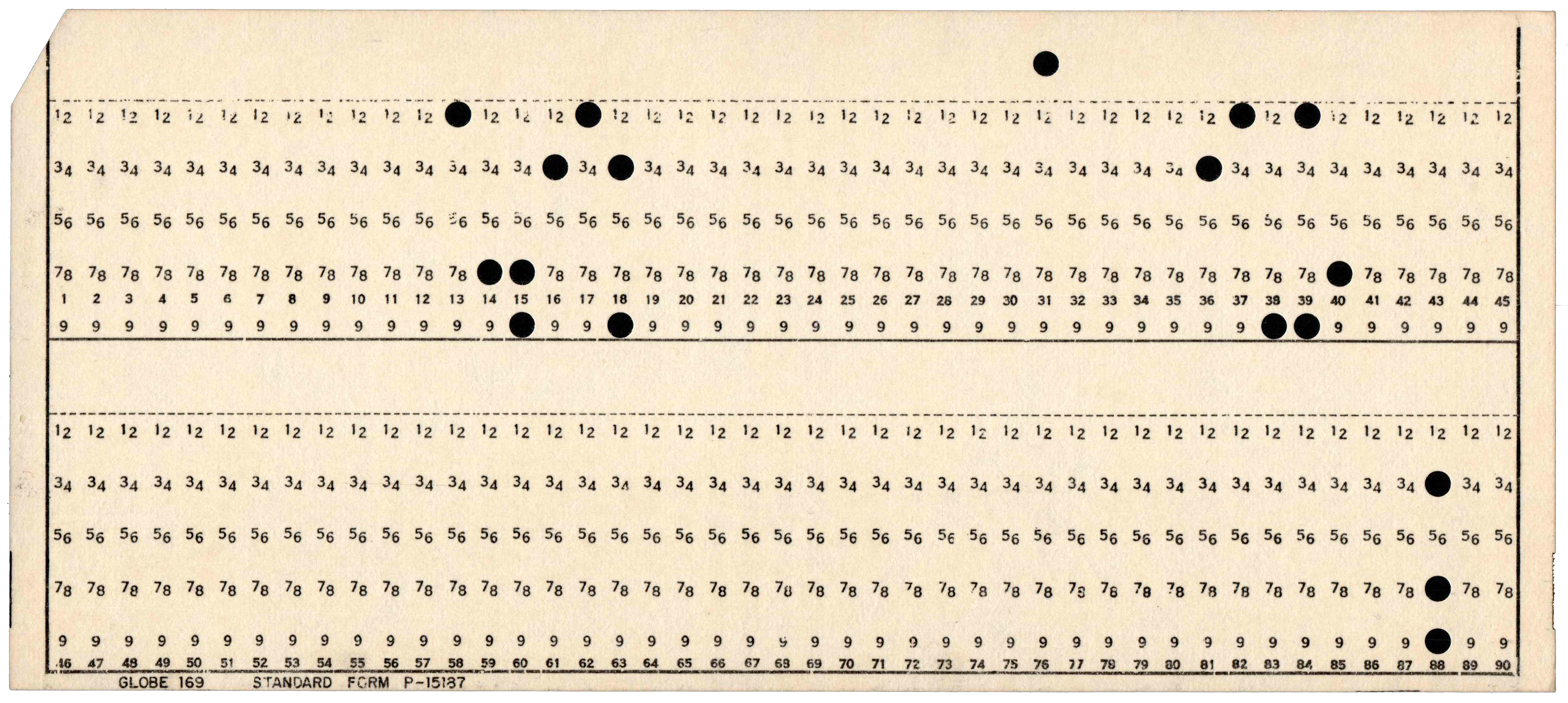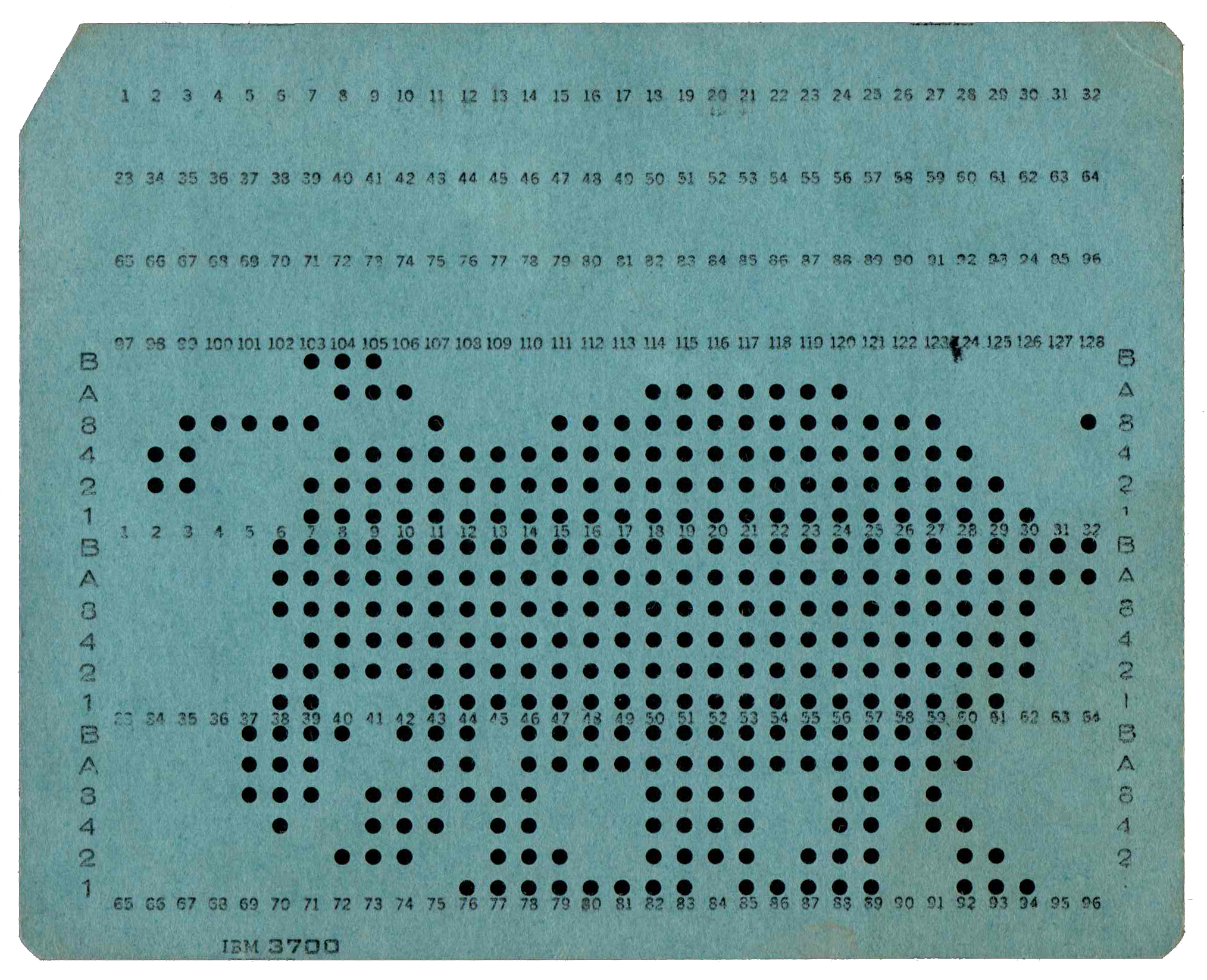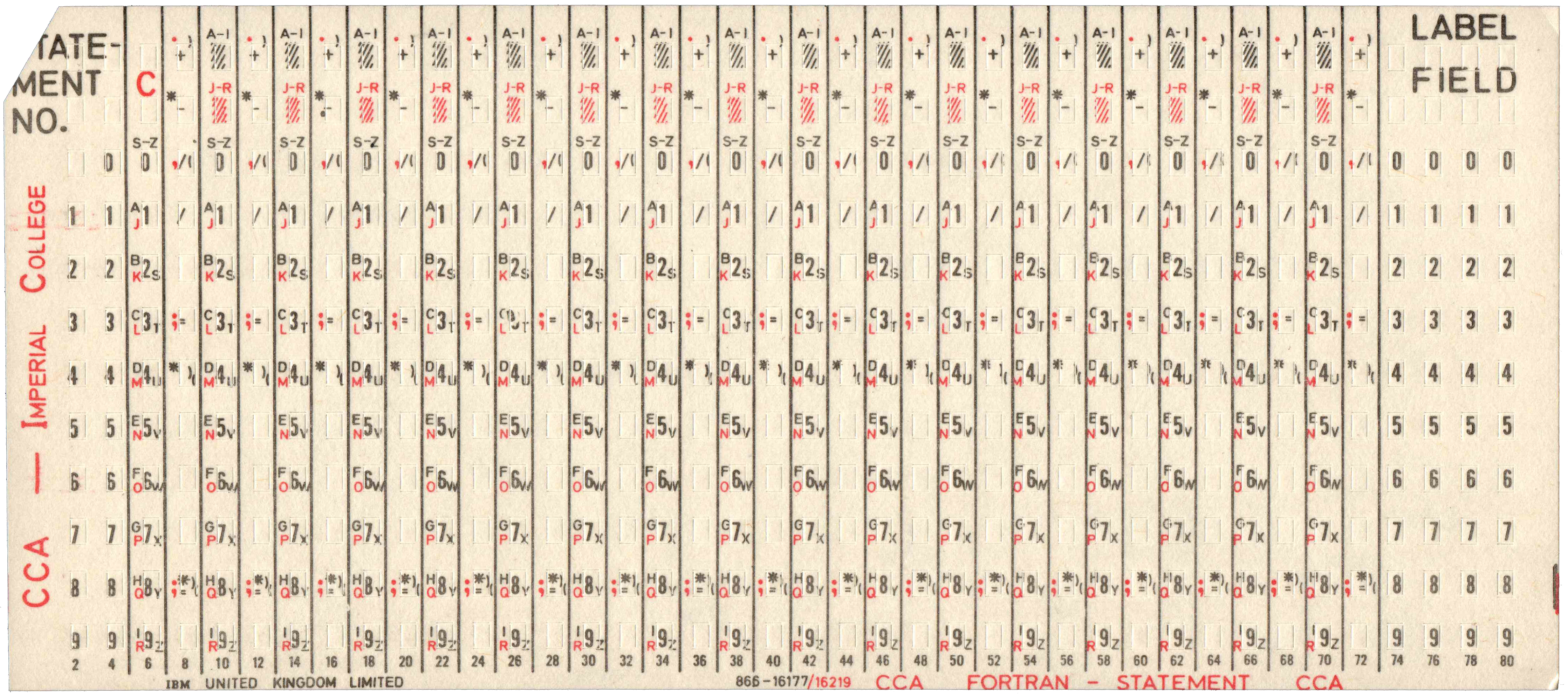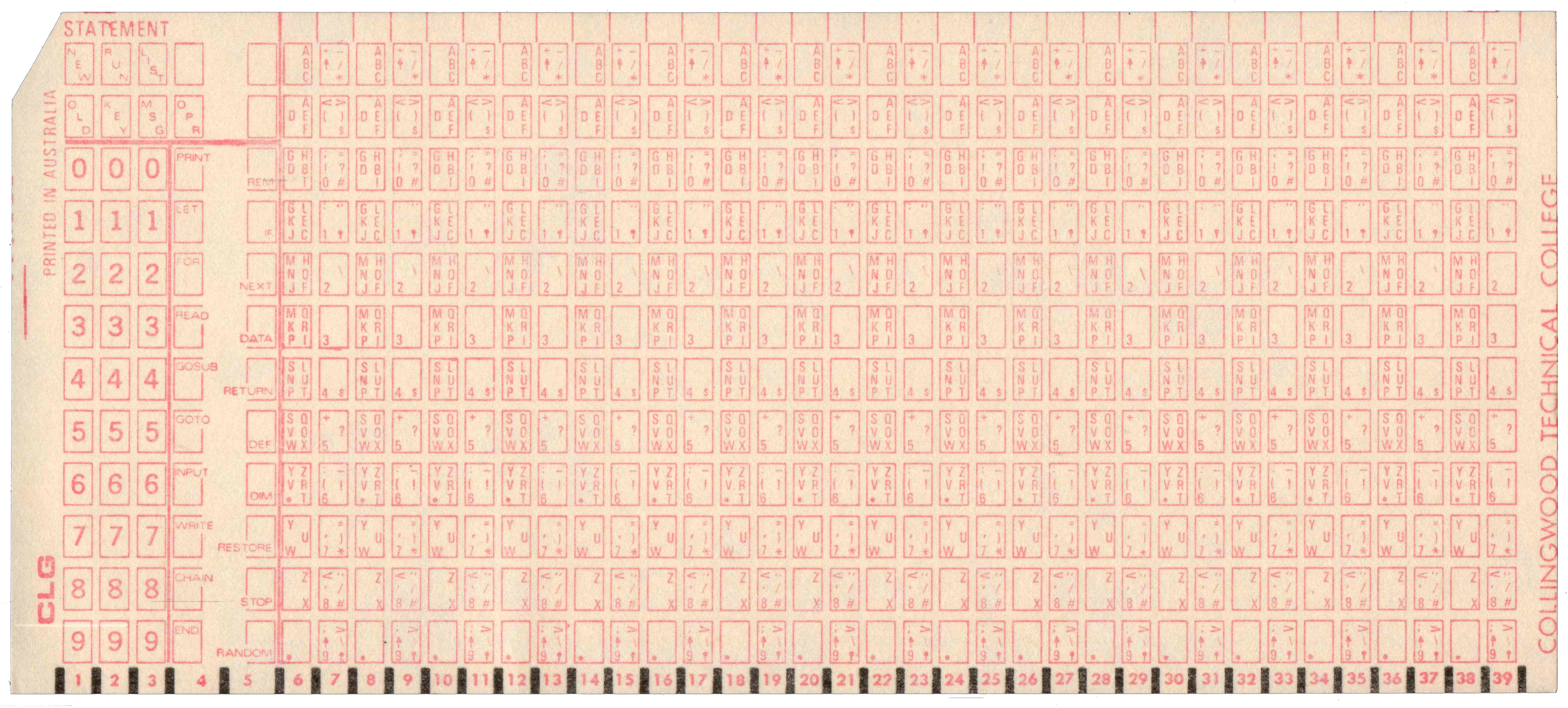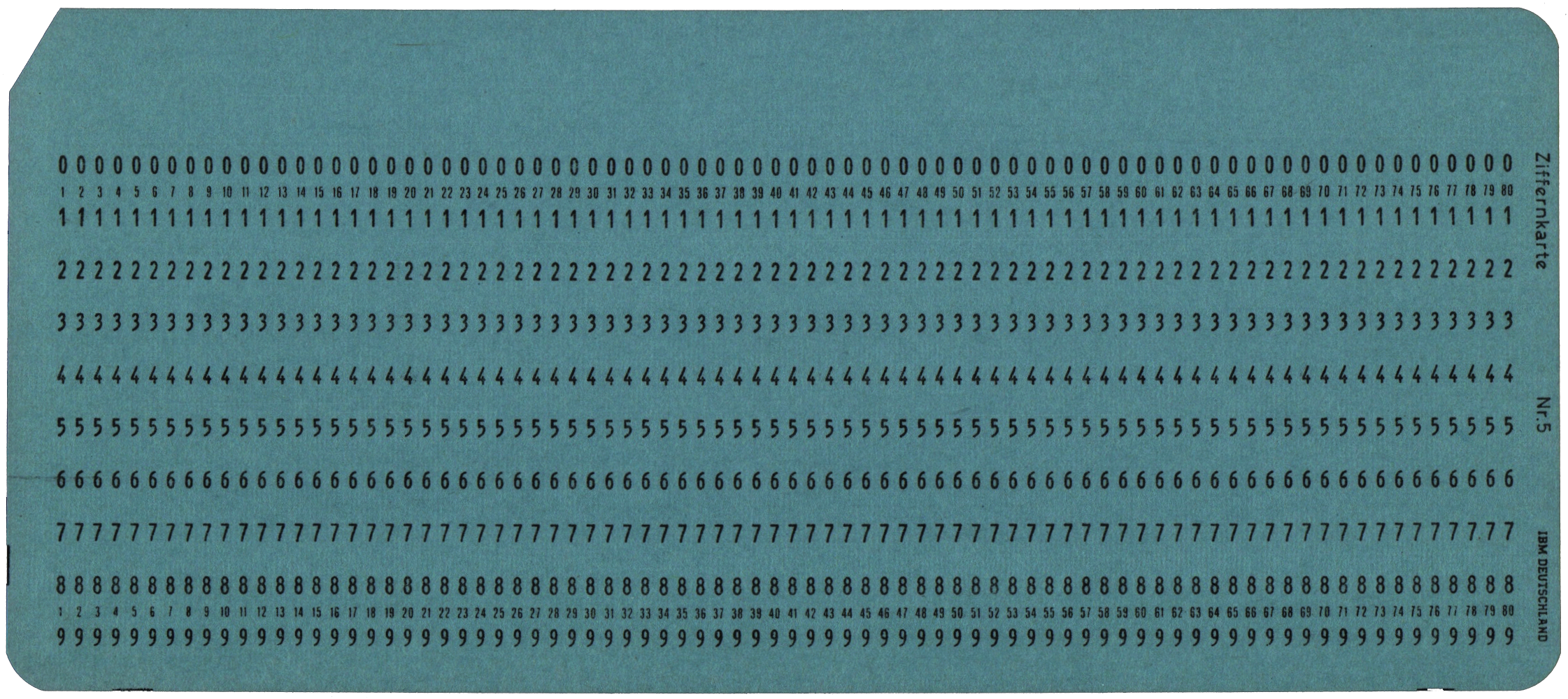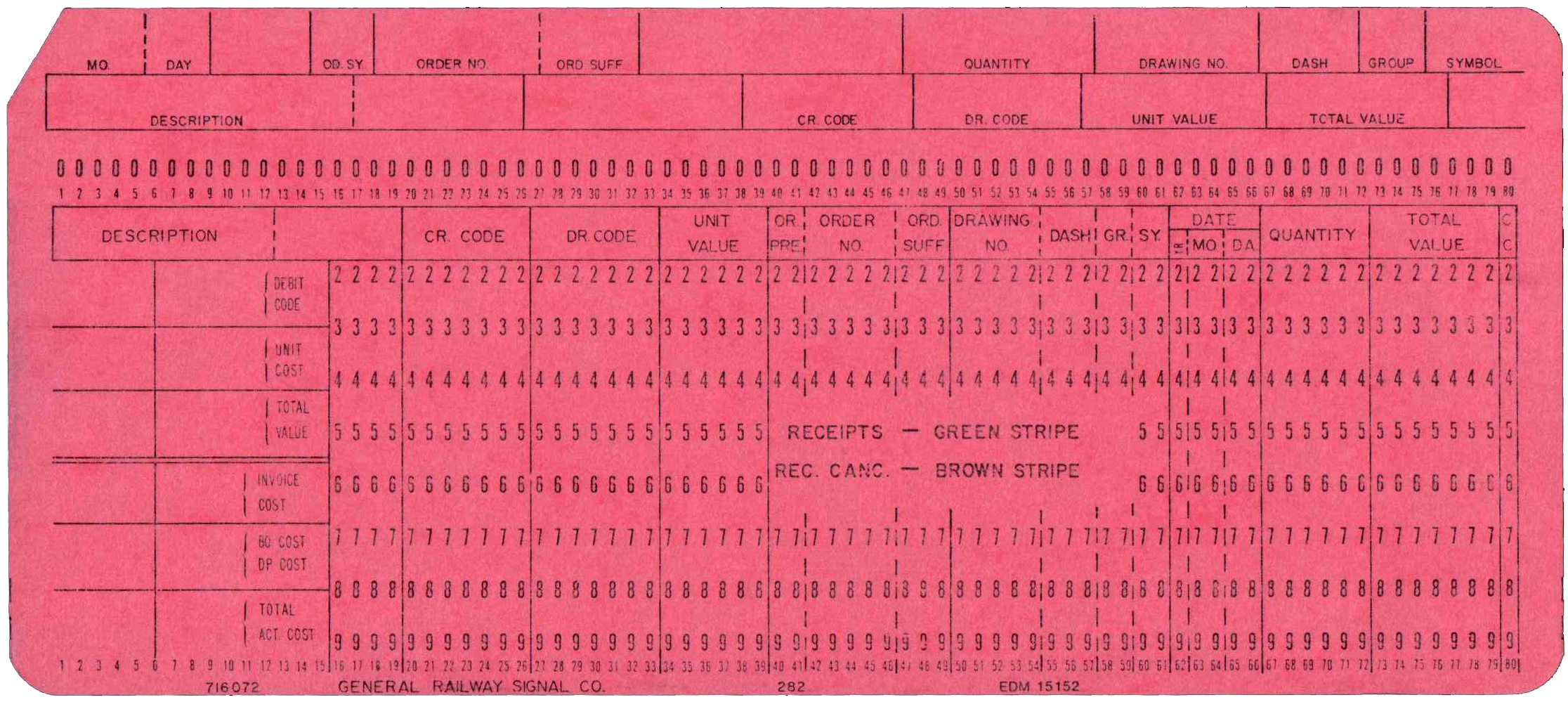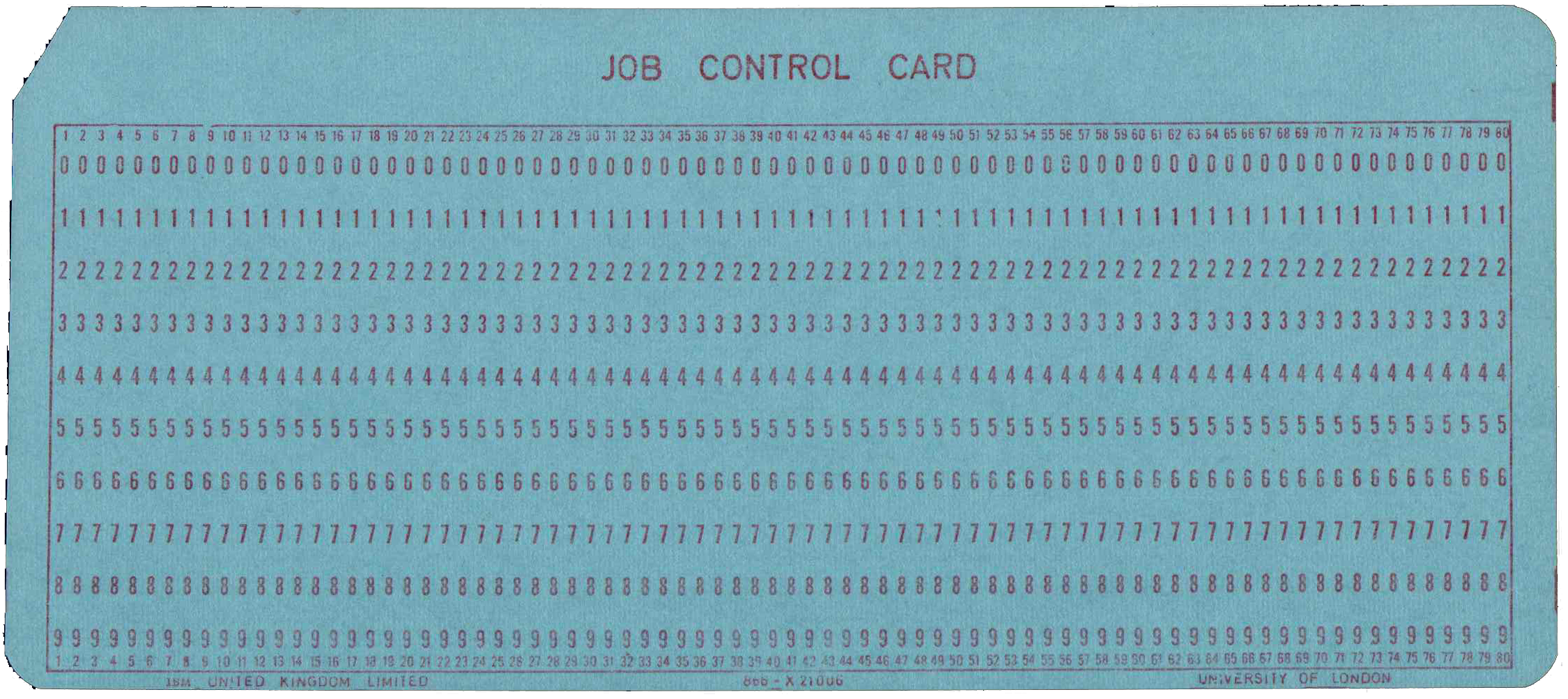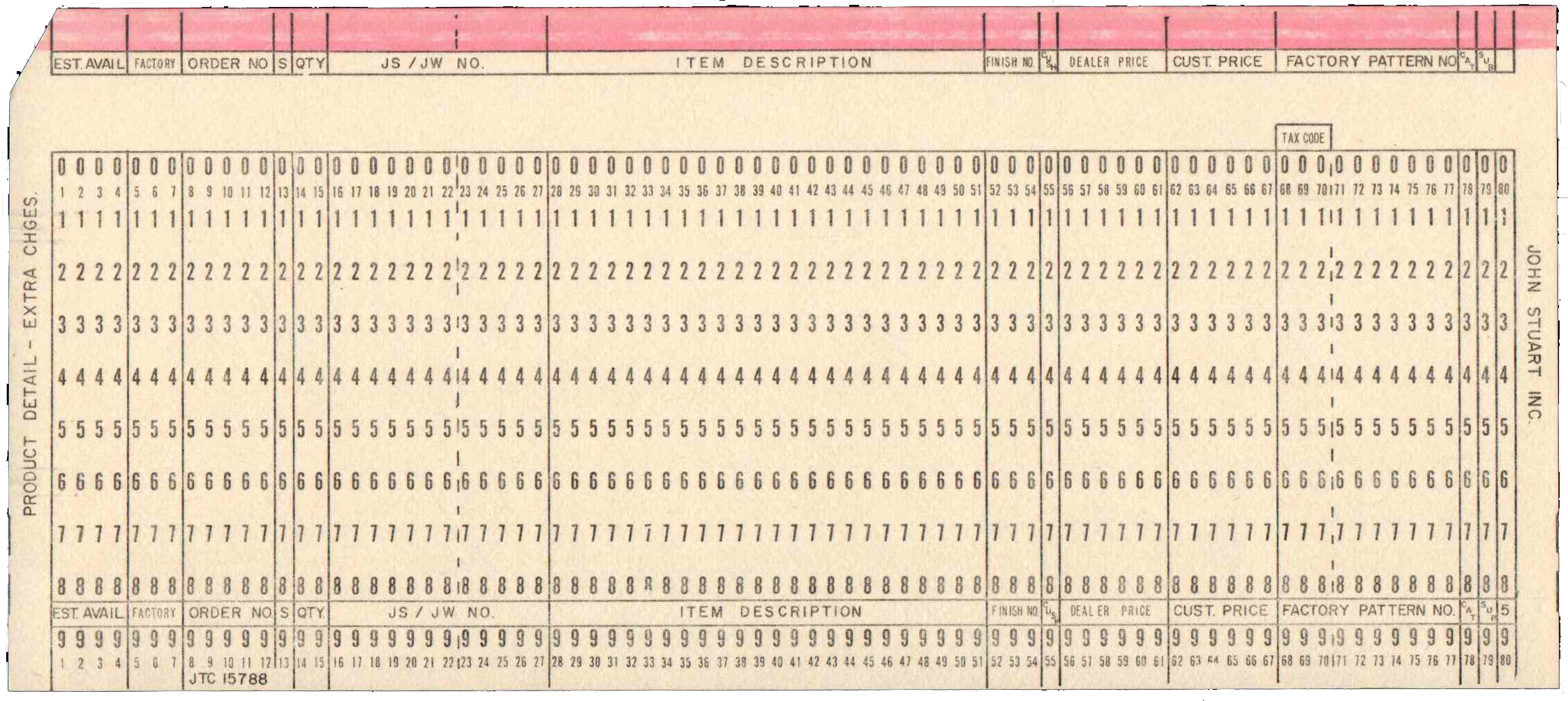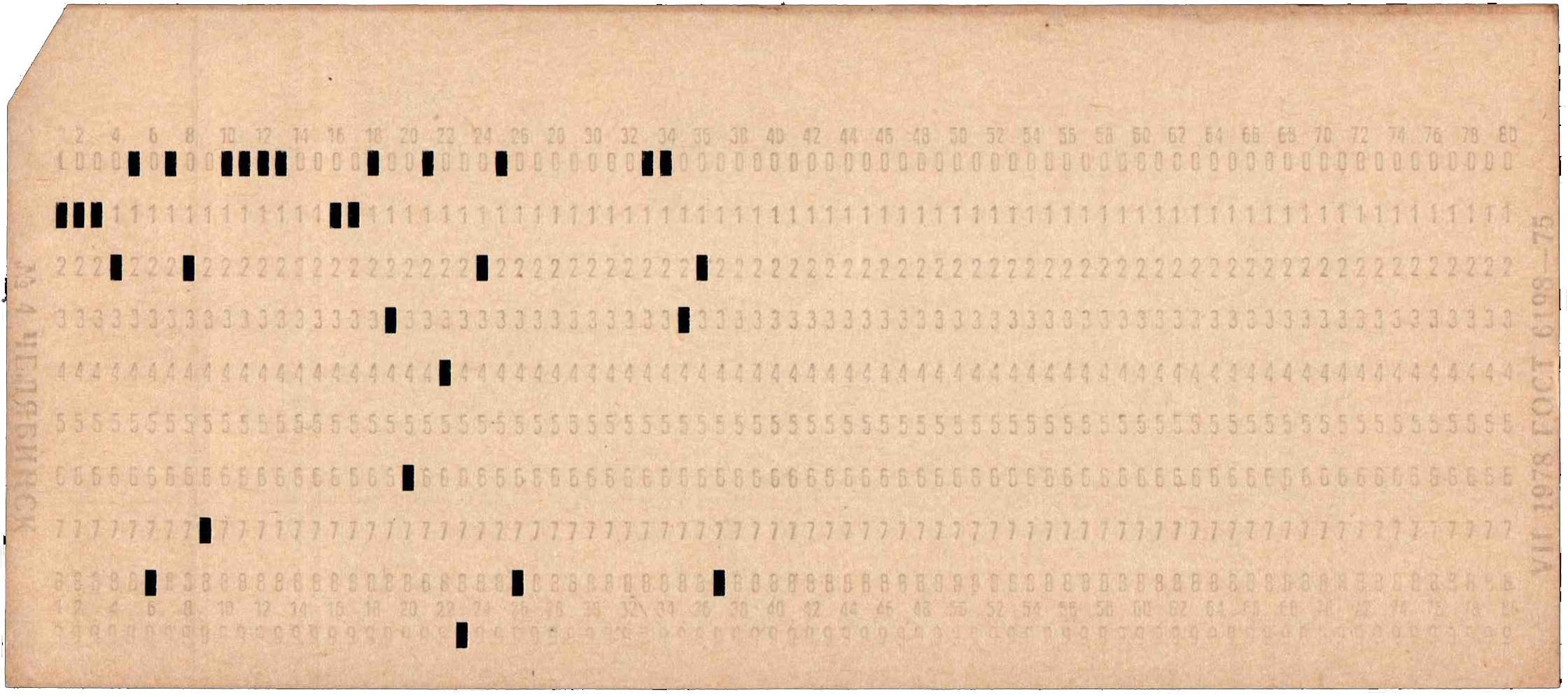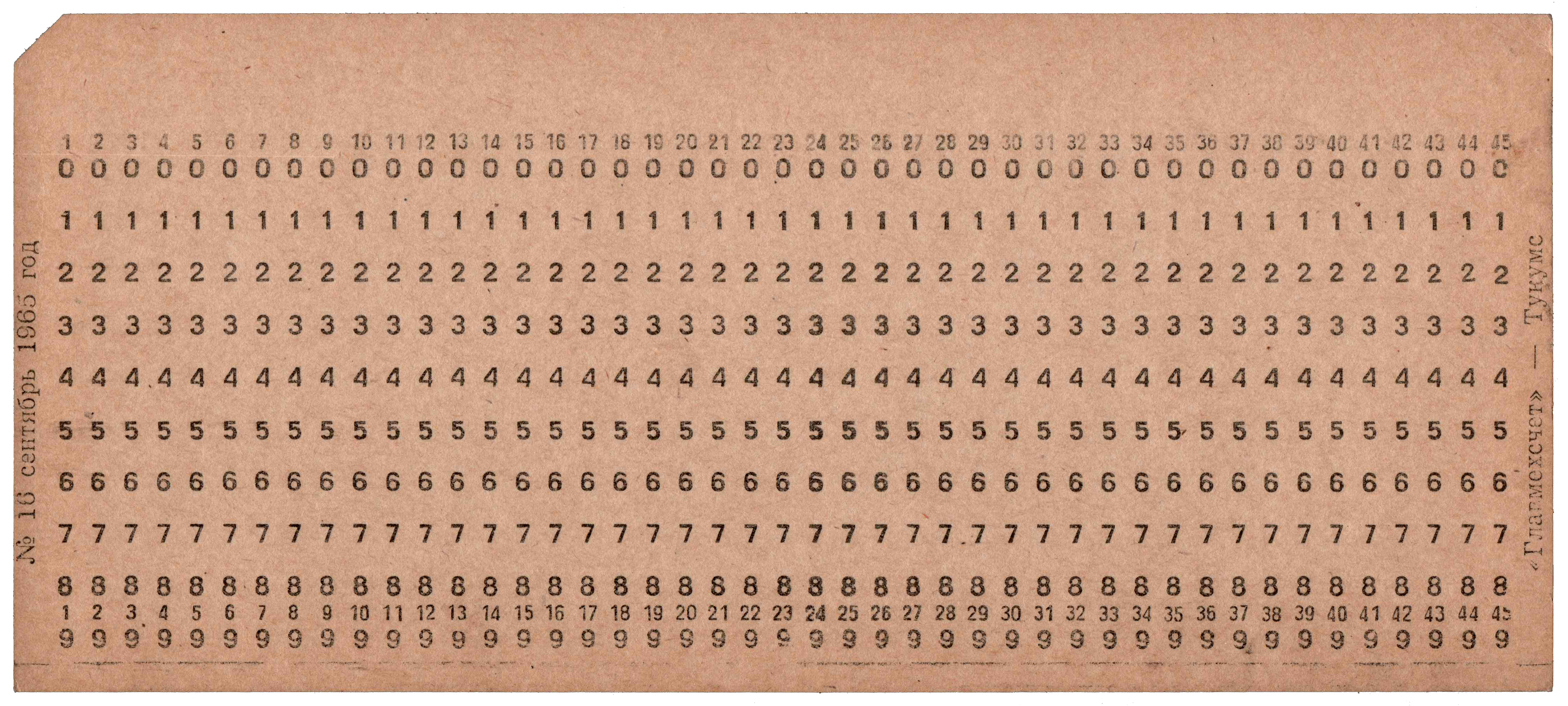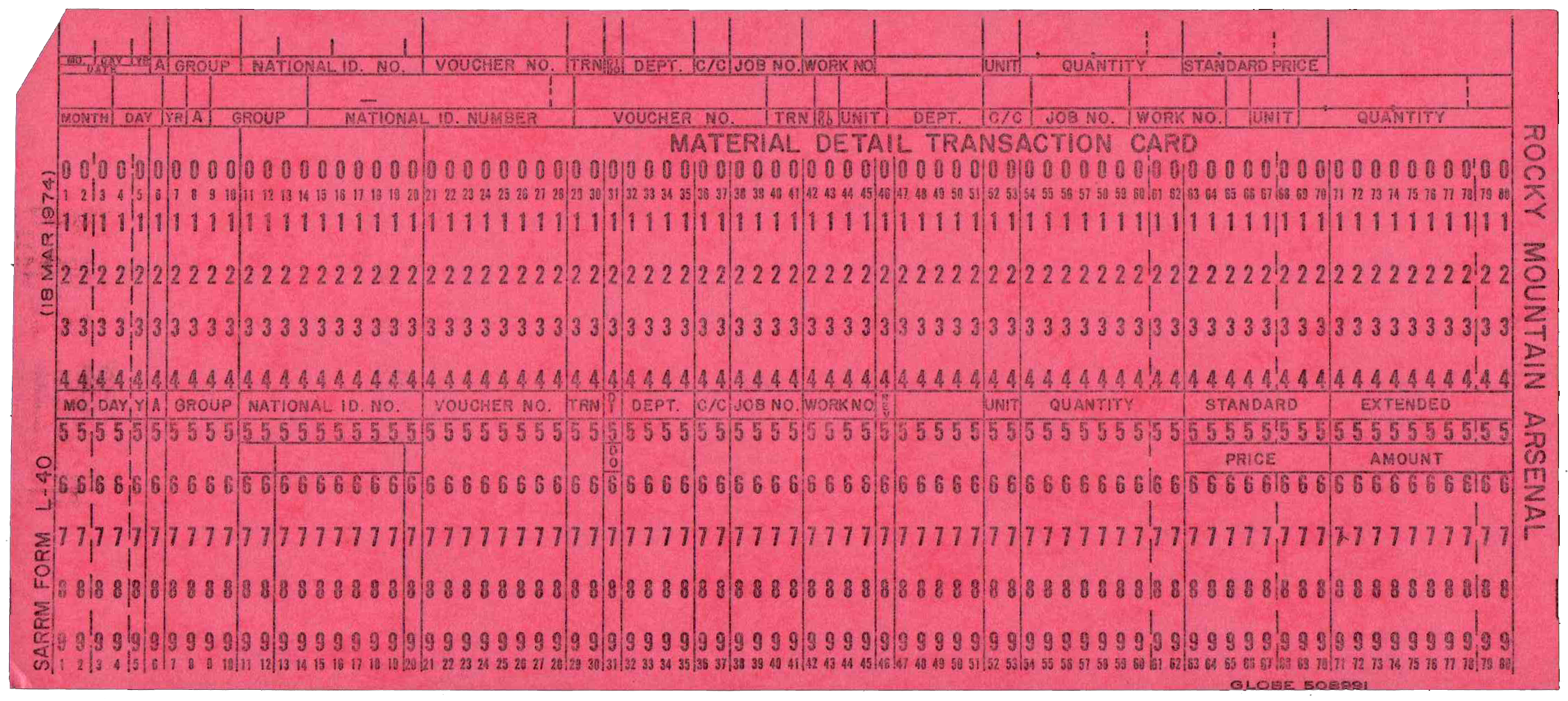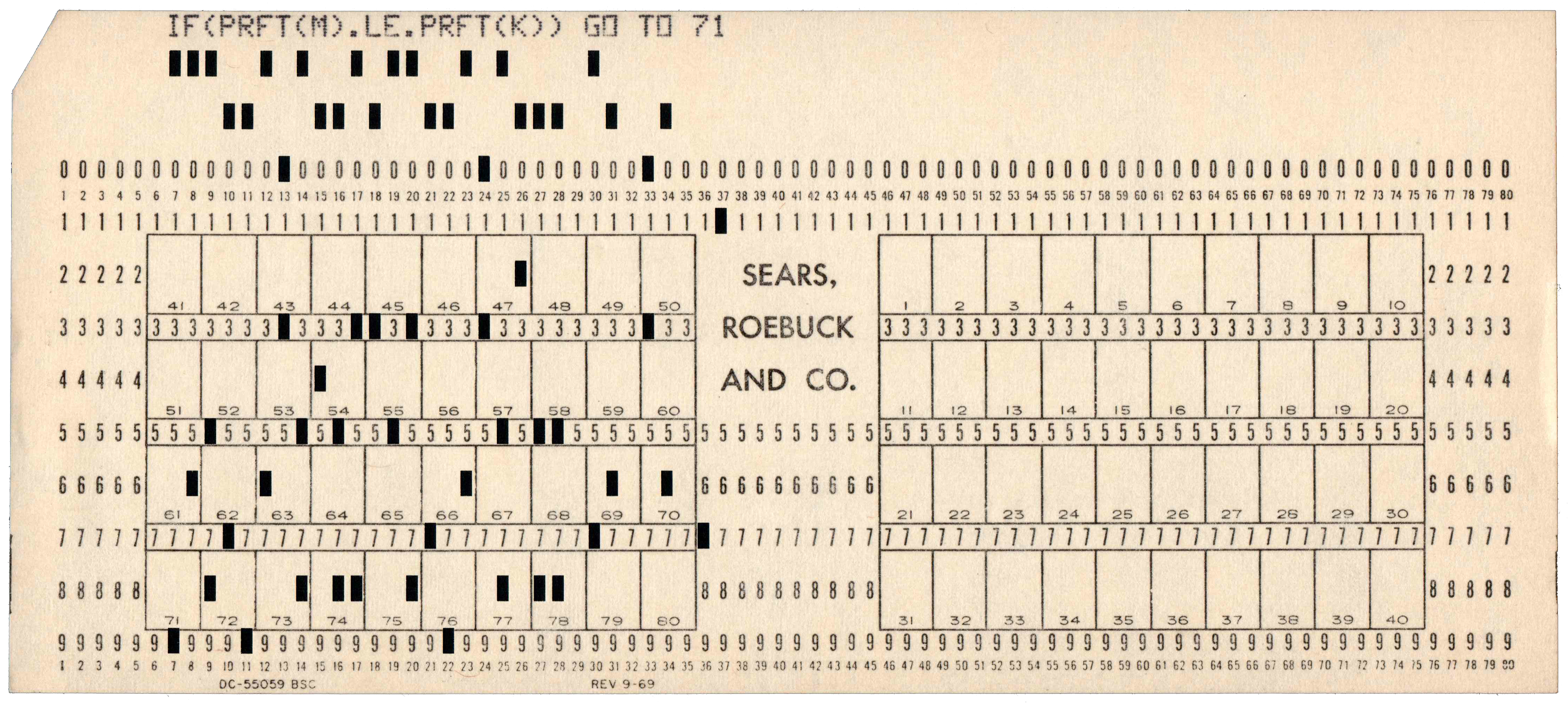Explore the entire collection of punch cards in the archive by navigating through the different categories of cards below.
Card Formats
Punch cards were developed in a variety of sizes and formats. Most people associate the format with the common 80-column variant, but a variety of standards were in use by different manufacturers into the 1980s.
Special Features
Many punch cards included specialised features for specific kinds of usage, processing or data storage. Some of these features can be found in cards in the collection.
Card Purpose
In addition to generic ‘general purpose’ cards, which could be used for any purpose, many specialty cards were printed with specific purposes in mind. These cards often assisted in collecting data to be punched into the card, or assisting the person punching the card to align data on the card to certain columns. In some cases cards were simply printed with specific colours or designs to assist the staff processing the cards to identify them in a stack.
Printers/Manufacturers
Whilst the earliest punch cards were printed by tabulating machine manufacturers, as the technology became more widely adopted, many other traditional printers and stationary cards began to print cards. By the 1960s and 1970s, hundreds of printers around the world were printing punch cards of various designs.
Countries
Punch cards were printed by both machine manufacturers and stationary printers around the world. This allowed localisation of cards for individual markets, but also often demonstrates regional differences in the use of card designs, card features and paper stock.
Companies & Institutions
Large institutions such as universities, government departments, and corporations often had branded or customised cards printed for their businesses’ needs or featuring their brand’s identity.
